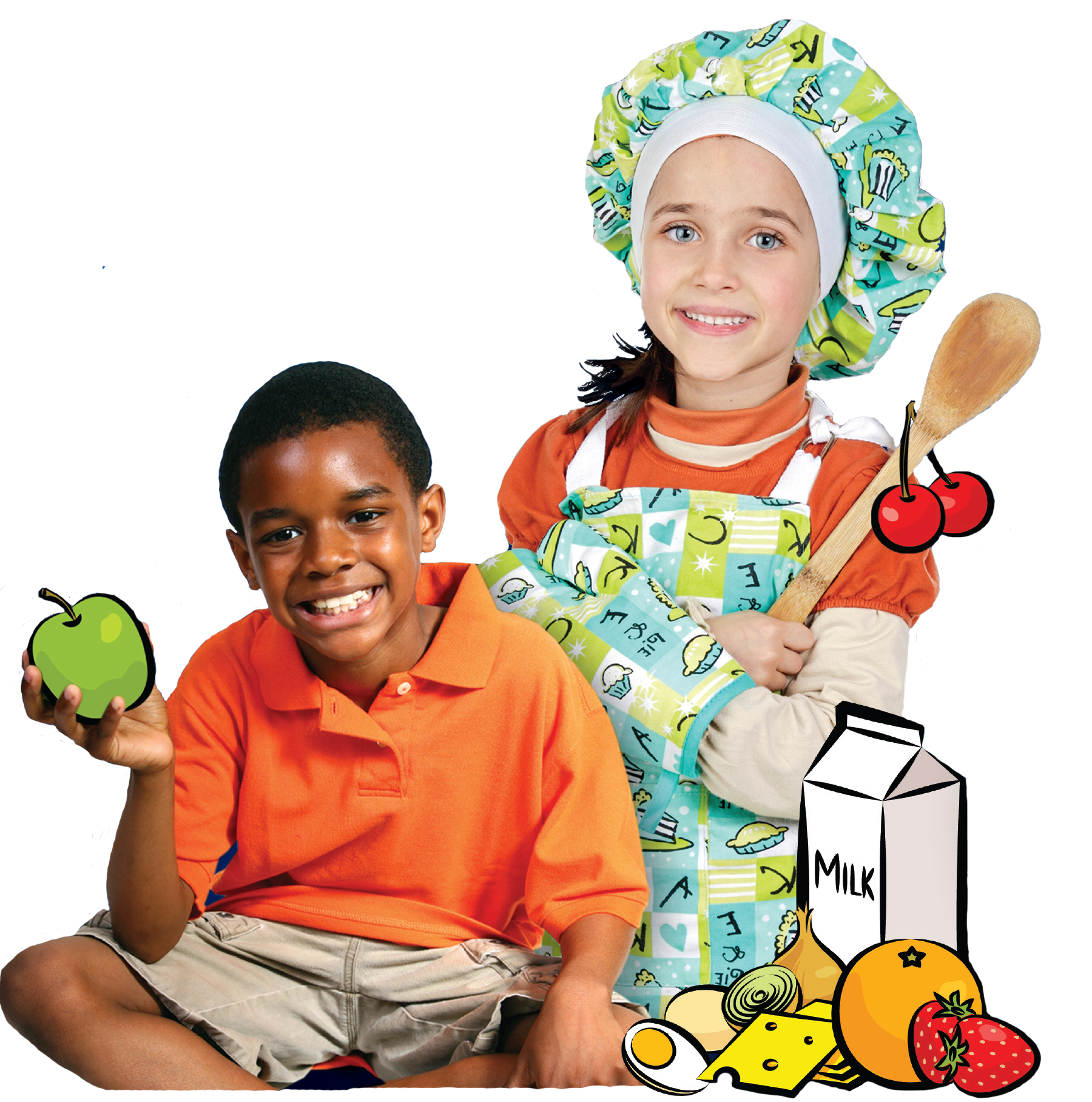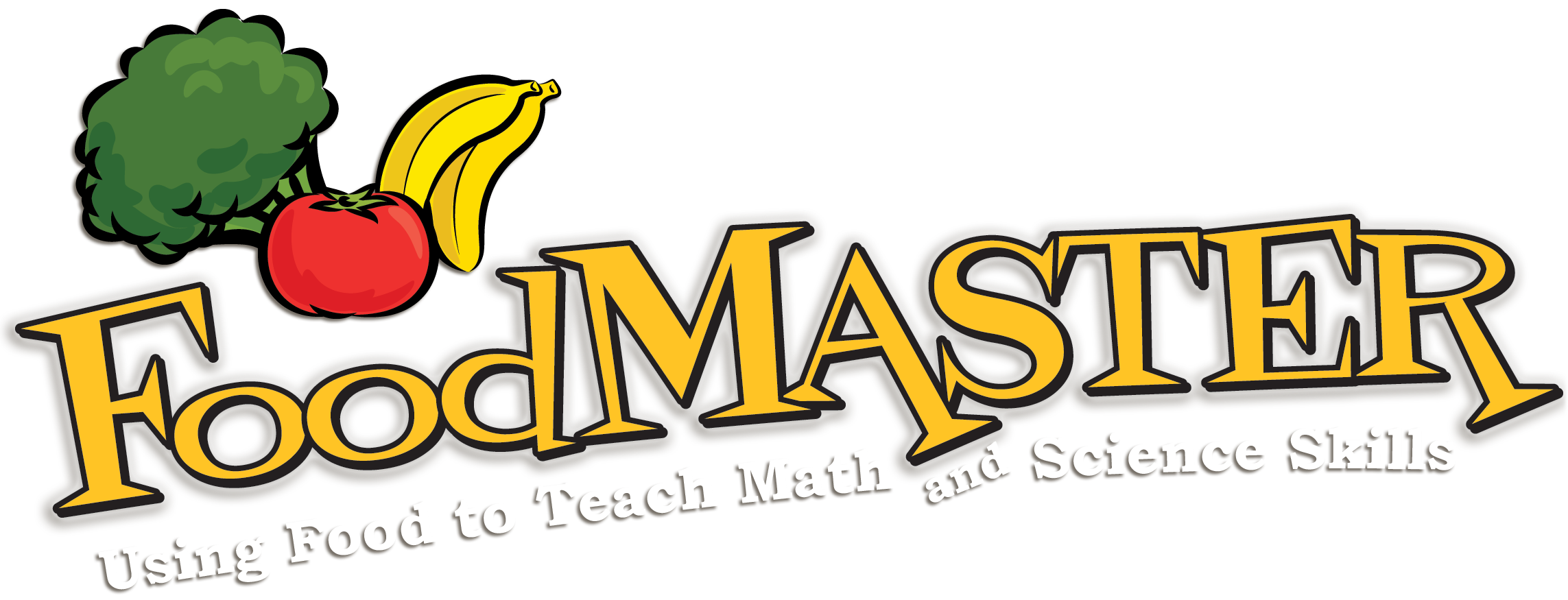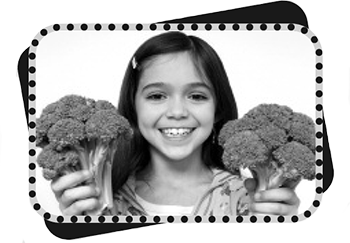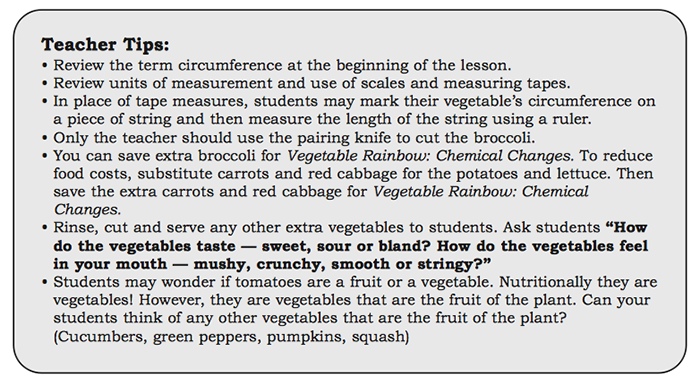Agricultural Literacy Curriculum Matrix
Lesson Plan
FoodMASTER: Vegetables
Grade Level
Purpose
Students measure the weight and length or circumference of various vegetables, classify the vegetables based on plant parts, explore chemical reactions from cooking colored vegetables in acidic and basic water, and use a variety of vegetables to prepare soup. Grades 3-5
Estimated Time
Materials Needed
Activity 1: Vegetable Jungle
- For the teacher: 1 paring knife.
- For each group: 1 food scale, 1 broccoli piece, 1 celery stalk, 1 lettuce leaf, 1 green pepper, 1 potato.
- For each student: 1 hand lens, 1 measuring tape (or use string and a ruler).
- Vegetable Jungle handout
- Stating the Facts About Vegetables handout
- Teacher Answer Key
Activity 2: Vegetable Rainbow
- For the teacher: Double burner hot plate, 2 pots (A and B), liquid measuring cup, tablespoon, 2 slotted spoons, 3 strong plates (Labeled A, B and C), 8 cups of water, 3 tablespoons of vinegar, 3 tablespoons of baking soda, 3 raw broccoli pieces, 3 raw carrot pieces, 3 red cabbage leaves, 3 small chunks of white onion.
- Vegetable Rainbow handout
- Color Changes in Acids and Bases handout
- Teacher Answer Key
Activity 3: Eating Vegetables
- For the teacher: Single or double burner hot plate, large pot, large stirring spoon, 1 set measuring spoons, can opener, 6 cups tomato juice, 1 teaspoon pepper, 1 teaspoon oregano, 16-ounce can diced new potatoes, 16-ounce can carrots, 16-ounce can corn, 16-ounce can green beans. Note: Instead of using canned vegetables, you could use frozen diced potatoes, frozen carrots, frozen corn and frozen green beans. Optional: Basil, garlic, parsley, onion flakes, red pepper, brown sugar.
- For each student: 1 spoon, 1 cup or bowl (foam or other heat stable product),
- Eating Vegetables handout,
- Scientific Soup handout
- Teacher Answer Key
Elaborate
Vocabulary
acid: a chemical compound that tastes sour
base: any substance that in water solution is slippery to the touch, tastes bitter, changes the color of indicators (e.g., turns red litmus paper blue), reacts with acids to form salts, and promotes certain chemical reactions (base catalysis)
chemical reaction: when two materials mix and react to make something new (sometimes good, sometimes bad)
pigment: the chemical compound that produces color
root: the part of the plant that grows into the soil to anchor the plant and collect water and nutrients
vegetable: any edible part of a plant that does not contain seeds
vitamins and minerals: the substances in food that our bodies need to be healthy and to use energy
Background Agricultural Connections
Introduction to FoodMASTER:
FoodMASTER (Food, Mathematics and Science Teaching Enhancement Resource) is a compilation of programs aimed at using food as a tool to teach mathematics and science. It is our theory that if food is used as a tool to teach mathematics and science, students will be better prepared to demonstrate and apply mathematic and scientific knowledge. Because students encounter food on a daily basis, they have preexisting contextual experiences preparing them for learning new and relevant mathematics and science material.
Food is conducive to hands-on and virtual, inquiry-based, active learning that uses multiple senses to engage students in the learning process. Utilizing food allows for an interdisciplinary approach to learning concepts and ideas in a variety of scientific subjects like general science, biology, chemistry, microbiology, nutrition and health. Additionally, food labs are a dynamic way to teach mathematics concepts such as numbers and operations, algebra, geometry, measurement and problem solving.
The knowledge and skill development that can be inspired by the FoodMASTER approach is limitless. Proper use of measurement tools, data collection and interpretation, application and generalization, classification and organization, graphing and comparative analysis, understanding chemical changes, observing functions of ingredients and controlling variables, pricing, critical thinking, self-directing learning, and team building are only a few of the potential knowledge and skill development areas for intermediate grade students experiencing FoodMASTER’s scientific inquiry labs.
Additional FoodMASTER lessons can be found to cover health and nutrition topics such as: Food Safety, Fruits, Milk and Cheese, Meat, Poultry, and Fish, Eggs, Fats and Oils, Grains, Measurement, and Meal Management.
Background for this lesson:
Vegetables are the parts of plants that people eat including roots, tubers, bulbs, stems, leaves, fruits, flowers, seeds and sprouts. Most Americans do not eat the variety or amount of vegetables that they need for healthy living. For this reason, it is important to learn about the nutrition and science of cooking vegetables.
In this lesson, students will:
- select appropriate measurement tools for measuring weight, length and circumference;
- practice measurement skills using appropriate units for weight, length and circumference;
- classify vegetables into five groups;
- state an example of a chemical reaction, an acid and a base;
- observe chemical reactions and record color changes;
- name at least one vitamin found in vegetables;
- select and use appropriate kitchen measurement tools;
- evaluate their soup creation; and
- design or plan a new soup.
Engage
- To introduce this lesson, ask students, "What is a vegetable?" Allow students to offer their ideas and draw on their prior knowledge.
- Ask students to name the parts of a plant. As students list the stem, root, leaves and flower, draw a simple sketch on the board of a plant using these primary plant parts.
- Display the broccoli, lettuce, asparagus, green pepper, and potato (that you will use for Activity #1) for your students to see. Ask students if any of those vegetables resemble the basic parts of a plant.
- Help students match the vegetables to the plant part. Help them see that asparagus is a stem, lettuce is a leaf, potatoes are roots, and broccoli and green peppers develop from a flower.
Explore and Explain

Activity 1: Vegetable Jungle
Scientific Inquiry: Stating the Facts About Vegetables
- Read Vegetable Jungle and complete the Doodle Bugs.
- Pass out vegetables, giving each group a broccoli piece, celery stalk, lettuce leaf, green pepper and potato. Alternatively, you may set up stations for each vegetable and have students rotate as a group from one station to the next.
- Students will measure the vegetables’ weights using the scale and lengths or circumferences using the measuring tape. Remind students to include units (centimeters or inch and grams or ounces) when recording measurements in the Vegetable Facts table.
- After measurements are complete, cut the vegetables in half.
- Instruct students to use their hand lenses to study the inside and outside of each vegetable and record the color, size and shape under “appearance” in the table.
- Discuss the classification of each vegetable. “What group does the vegetable belong in? Does this vegetable grow below or above ground? Does it contain seeds? How did you know it belonged in the root, stem, leaf, flower, or fruit group?”
- Instruct students to complete the Vegetable Facts table.

Activity 2: Vegetable Rainbow
Scientific Inquiry: Color Changes in Acids and Bases
- Place two pots on a double burner. Have students measure and pour 4 cups of water into each pot. Bring the water to a boil.
- Read Vegetable Rainbow and complete the Doodle Bugs while the water heats.
- Have students carefully measure and add three tablespoons of vinegar (acid) to pot A and three tablespoons of baking soda (base) to pot B.
- Use the slotted spoons to stir the water in each pot.
- Use the slotted spoon to gently add a piece of each kind of vegetable to pot A and to pot B. Place remaining raw vegetables on plate C (C=raw).
- After the color changing reaction occurs, remove the vegetables from the water and place on corresponding plates (plate A = acid, plate B = base). Allow students to observe the color changes.
- Compare the raw pieces to the cooked pieces. “What colors are the raw vegetables, the vegetables cooked in an acid, the vegetables cooked in a base? Which vegetable changed colors the most, the least? Did the vegetables change colors more or less in the acidic water or basic water? Did the color changing reactions happen slowly or quickly? Would you want to eat broccoli cooked in the acidic water? Why or why not?”
- Instruct students to complete the Color Facts table and final question.

Activity 3: Eating Vegetables
Scientific Inquiry: Scientific Soup
- Begin by placing your large pot on the hot plate burner. Add the tomato juice. Bring to a boil and then reduce heat so the broth simmers (little bubbles).
- Read Eating Vegetables and complete the Doodle Bugs.
- Next, have students carefully measure and add one teaspoon of pepper and one teaspoon of oregano.
- Allow students to help add the potatoes, carrots, corn and green beans.
- Student helpers may take turns stirring the soup.
- Direct your students to smell the soup and decide as a class if they want to add additional spices.
- With your guidance, students can decide how much of each spice to add. Allow students to measure and carefully add the extra spices.
- Let the soup simmer for five minutes.
- While the soup is simmering, discuss the variety of vegetables used (colors and types). In addition, you can explain the three components of soup: liquid (broth or juice), seasoning/spices and chunks of vegetables, meat, noodles, rice, etc.
- Students may then begin brainstorming their own personal soup creation.
- Serve soup in cups or bowl (not paper). Then let students try the soup.
- Instruct students to rate their soup using the smiley face scale.
- Next, students will create their own kind of soup and record the steps under My Soup Creation. Ask probing questions to help students with their soup creations. “What did you like best about our soup? What did you not like? What did we do or add first? What liquid would you use, tomato juice, chicken broth, beef broth? What did we add next? Would you make your soup spicier by adding chili powder & red pepper? Would you add any vegetables, meat, noodles, rice, beans?”

Elaborate
-
Farmer's Market Tour: Arrange a tour of your community's farmers' market in the fall or spring to observe the variety of food items farmers have produced. Assign students to talk with the farmers to learn more about what they do. If a real tour is not possible, have students do a virtual tour online or invite one or more local farmers to talk about their role and the work they do in your community.
-
Growing It! Complete the math enrichment activity using the attached worksheets. Students will learn about growing a garden. Students will calculate the correct pH balance in soils.
Evaluate
After conducting these activities, review and summarize the following key concepts:
- Vegetables area an important part of a healthy diet.
- Vegetables come from plants. They could be the stem, leaves, or root of the plant.
Acknowledgements
- Created by: FoodMASTER- Food, Math, and Science Teaching Enhancement Resource
- Sponsored by: SEPA- Science Education Partnership Award
- Partnered with: Ohio University and East Carolina University
- Graphics provided by FoodMASTER
Recommended Companion Resources
- AgBadging Field Guide
- Eat Happy Project video series
- Edible Gardening: Growing Your Own Vegetables, Fruits, and More
- Farmers Market
- Follow That Food: Carrot Edition
- Fresh-Picked Poetry: A Day at the Farmers' Market
- Ode to an Onion
- Oliver's Vegetables
- Rah, Rah, Radishes!: A Vegetable Chant
- Spring is for Strawberries
- Stinky and Stringy: Stem & Bulb Vegetables (Plants We Eat)
- The Science of Cooking
- The Ugly Vegetables
- What is a Fruit? What is a Vegetable? Bulletin Boards
Author
Organization
| We welcome your feedback! If you have a question about this lesson or would like to report a broken link, please send us an email at matrixelearning@gmail.com. If you have used this lesson and are willing to share your experience, we will provide you with a coupon code for 10% off your next purchase at AgClassroomStore. |
